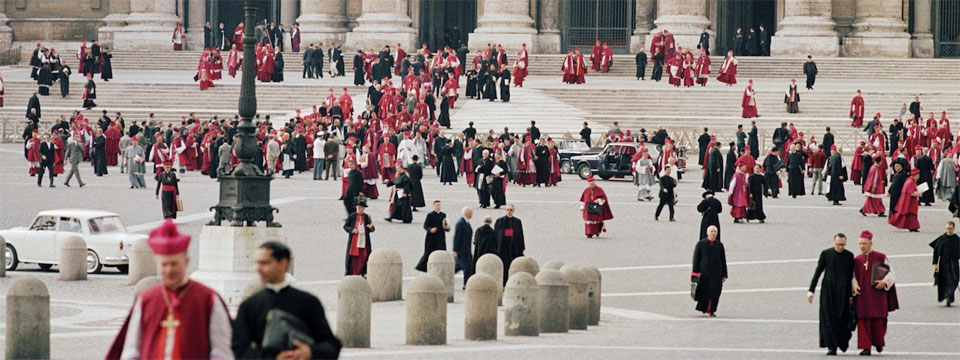Vatican II
Second Vatican Council, 21st ecumenical council of the Roman Catholic Church (1962–65), announced by Pope John XXIII on Jan. 25, 1959, as a means of spiritual renewal for the church and as an occasion for Christians separated from Rome to join in search for reunion. Preparatory commissions appointed by the Pope prepared an agenda and produced drafts (schemata) of decrees on various topics. In opening the council on Oct. 11, 1962, the Pope advised the council fathers to try to meet the pastoral needs of the church. Those summoned to the council included all Catholic bishops and certain other church dignitaries. Invited to the council sessions, but without the right to vote, were a number of observers from the major Christian churches and communities separated from Rome and a number of Catholics called auditors.
From Encyclopedia Britannica: https://school.eb.com.au/levels/high/article/Second-Vatican-Council/74901
Church Documents
Definitions
An ecumenical council is a conference of ecclesiastical dignitaries and theological experts convened to discuss and settle matters of Church doctrine and practice in which those entitled to vote are convoked from the whole world and which secures the approbation of the whole Church.
Video
Vatican II and it's Contents
-
 Fr Tim Finigan was keynote speaker at the 2013 ACCC Conference. This is the first of four papers he presented at the conference. They were:
Fr Tim Finigan was keynote speaker at the 2013 ACCC Conference. This is the first of four papers he presented at the conference. They were:
1. Vatican II and its context.
2. Trent and Vatican II: compared (not contrasted).
3. The hermeneutic of continuity.
4. Church, Sacrament, and the People of God.
Ways Vatican II Shapes The Church Today


 Vatican II Documents
Vatican II Documents



